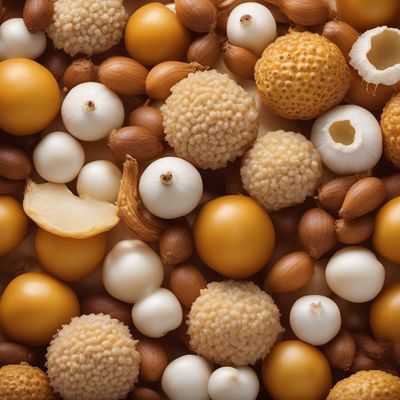
Ingredient
Paw paws
The Exotic Delight
Paw paws, also known as papayas, are tropical fruits with a vibrant orange flesh and a sweet, tropical flavor. They are widely used in both sweet and savory dishes, adding a tropical twist to any recipe.
Origins and history
Paw paws are native to Central and South America, where they have been cultivated for centuries. They were highly valued by the ancient Mayans and Aztecs for their delicious taste and medicinal properties. Today, they are grown in tropical regions around the world.
Nutritional information
Paw paws are rich in vitamin C, vitamin A, and dietary fiber. They are also a good source of antioxidants and contain enzymes that aid digestion. With only 60 calories per cup, they make a healthy addition to any diet.
Allergens
Paw paws may cause allergic reactions in some individuals, especially those with latex allergies. It is advisable to exercise caution if you have a known latex allergy.
How to select
When selecting paw paws, look for fruits that are slightly soft to the touch and have a vibrant orange color. Avoid fruits with bruises or blemishes, as they may indicate overripeness or damage.
Storage recommendations
To store paw paws, keep them at room temperature until they are fully ripe. Once ripe, they can be stored in the refrigerator for up to a week. It is best to consume them as soon as possible for the freshest flavor.
How to produce
Paw paws can be grown in tropical and subtropical regions. They require a warm climate, well-drained soil, and regular watering. They can be grown from seeds or propagated through cuttings.
Preparation tips
Paw paws can be enjoyed fresh, sliced and added to fruit salads, smoothies, or desserts. They can also be used in savory dishes like salsas, marinades, or grilled alongside meats for a tropical twist.
Availability
Paw paws are commonly available in tropical regions such as Central and South America, the Caribbean, Southeast Asia, and Hawaii.

